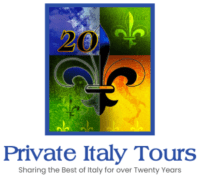When in Venice, either with one of our small group tours or on my own, I always stay at a lovely small hotel that faces the Campo Santa Maria Formosa, the Palazzo Vitturi Hotel. The rooms with views facing the campo look directly out on the Church of Santa Maria Formosa. The current structure is built over the foundations of a 7th Century AD church, established by the Tribuno family, the first church dedicated to the Virgin Mary.
In about five minute’s time, you can find yourself in one of Venice’s most beautiful campos, that of San Giovanni e Paolo, named for the Dominican Basilica that forms one side of the open space. It is a glorious church, and in the early morning I will enter by the side entrance and just sit.
Buildings such as this give a sense of time that defies description. Occasionally a monk will shuffle by, his sandaled feet adding ever more shimmer to the well-worn mosaic of the stone floors. Morning prayers are said in the chapel, and the echoes of the monks softly fill the space with their chants and responses.
Directly outside the Basilica’s main entrance you will see the gorgeous trompe-d’oeil façade of the Scuola Grande di San Marco. The Confraternity of San Marco constructed the original structure in 1260 and used it as the organization’s home. Following a fire in 1485, the structure was rebuilt on a design by Pietro Lombardo and Marco Codussi. During the Austrian occupation of the early 19th Century, the building was converted to a hospital, and it remains the largest hospital in Venice: San Giovanni e Paolo.
Why all this information about these buildings? Next to the Basilica, and around the corner from the Hospital is the location of the Scuola di Sant’Orsola. This originally served as the parish house for the Dominican monks. Under the patronage of Leonardo Loredan, later elected Doge of the city, the school thrived. In this school, Vittore Carpaccio painted a series of works about the life of Saint Ursula in the 1490s. The nine panel painting moved to the Accademia in Venice in 1812 following the suppression of religious order under Napoleon’s occupation.
The nine panels include: Arrival of the Ambassadors, Departure of the Ambassadors, Return of the Ambassadors, Meeting of Ursula and the Prince, Meeting of Pope Cyriacus and the Pilgrims, The Dream of Saint Ursula, Arrival in Cologne, Martyrdom and Funeral of Ursula, and Apotheosis of Ursula.
Often, I will call for a reservation at the Osteria da Alberto for dinner. This typical Venetian Trattoria, just a few minutes’ walk from the Campo that fronts the Basilica is a treasure. They showcase food as fresh and authentic as possible, and the staff offer easy service served with gusto. You will leave knowing you received a great meal for a fair, “no tourist”, price.
I also want to restate my strong recommendation for the Hotel Palazzo Vitturi on the Campo Santa Maria Formosa. It is a lovely small ‘boutique” hotel with particularly good service.
When I awaken, usually before sunrise, and watch the strike of rising sun on the Campanile of Santa Maria Formosa, I experience two things: a deep gratitude to even be in Venice and a growing excitement about the day ahead. GO!


